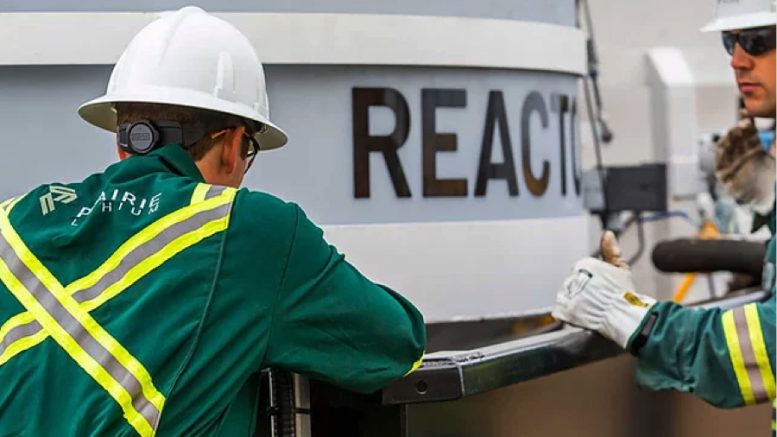It is said that to produce any good, what cannot be grown must be mined. By this token, governments and the general public tend to conveniently forget that the energy revolution and, by extension, the global effort to reduce anthropogenic carbon emissions depend squarely on the abundant and reliable supply of critical metals mined from the ground.
With the recent release of the Canadian federal government’s 2030 Emissions Reduction Plan, there was a distinct lack of language and focus on addressing key issues affecting the development of new mines that will be needed to meet demand stemming from the energy revolution.
While Canada’s 2030 Emissions Reduction Plan is meant to serve as a pathway for Canada to achieve its official pledge to reduce emissions by 40% to 45% below 2005 levels and achieve net zero by 2050, it is ambitious in scope, optimistic in its assumptions, and vague in terms of addressing the emerging supply gaps for critical minerals in the medium and long term.
Although it is an essential framework for Canada to achieve its emissions commitments, the 271-page document fails to address the metals and minerals required to meet these ambitious targets.
As CIBC Capital Markets analyst Shaz Merwat pointed out in a recent research note, the most notable incremental data point is that the government is now mandating at least 20% of all light-duty vehicle sales to be electric vehicles (EVs) by 2026 and 60% by 2030. Even without this new initiative, Bloomberg New Energy Finance (NEF) already forecasts 20% Canadian EV sales in 2026.
Demand for minerals needed for batteries, including lithium and cobalt, could increase by almost 500% by 2050, the World Bank estimates. Asia, particularly China, dominates the global production and processing of critical minerals, rare earths, and rare metals used to make EVs. A green infrastructure and transportation spending push will mean more mining of lithium, nickel, graphite, copper, silver, rare earths and tin.
Based on an analysis by the World Bank, the Canadian Climate Institute, in its Jan. 2020 “Charting our Course” report, found that Canada’s mining sector is indeed well-positioned to take advantage of increased global demand for clean technology. Canada is home to significant deposits of almost all critical minerals and metals for clean technologies.
But battery and energy metals demand is moving so fast that supply will be highly challenged to keep up. Without a significant thrust by national and provincial governments to entice producers and junior miners to find and develop new mineral deposits, glaring supply deficits for lithium, nickel and copper will beset the industry for some time and keep EV prices high and adoption rates constrained.
These supply deficits will only increase our dependence on foreign suppliers unless we start mining and refining these critical minerals ourselves.
The U.S. and Canadian governments have been good about providing incentives for EV buyers and manufacturers. However, little tangible support is on offer when it comes to mining, with a seemingly ever-growing list of sizeable battery metal mine development projects being left in legal limbo.
For example, in Canada, Bill C-69 — the Impact Assessment Act passed in 2019 — is legislation passed by a federal government seemingly out of touch with the frustrating experience many miners and developers deal with at the grassroots level. In short, Bill C-69 broadened the scope of the assessment process and added more consultation with the public and particularly, Indigenous groups.
The reality is that while Indigenous consultation and Aboriginal rights cannot and should not be ignored, the Impact Assessment Act does not stimulate investor confidence in Canada as a mining investment destination. The legislation can present a significant obstacle to companies trying to move a project forward to production and, in the worst of cases, could drag the process out so many years that the economics no longer work and the mine is shelved.
This often happens in North America, where it can take 20 years to move a project from discovery to commercial production. Throw into the mix the barrage of often spurious legal challenges by non-governmental agencies regarding the issuance of new mining permits, and the development timelines continue to slip.
When it comes to mining critical metals, a recent Fraser Institute report found that Canadian mining jurisdictions lagged their international competitors for increases in the time for permit approval, transparency and confidence that permits will be granted.
Canada has a multi-billion-dollar fund set up to invest in green technologies and is trying to entice companies involved in all levels of the EV supply chain. Last month, the federal government announced financial support for building two facilities that will make battery materials for EVs and one battery gigafactory. Still, no agreements have yet been announced for mineral extraction or refining.
Absent before the Apr. 7 federal budget announcement earmarking $3.8 billion for investment in Canada’s critical minerals industry, however, was a coherent national strategy for Canada’s critical mineral sector focused on, among other things, driving research, innovation, and exploration. It’s late in the game to do so now, and without addressing permitting times (and general anti-mining sentiment), it’s not going to result in getting the required materials for the energy transition in the timeframe we need them.
For Canada and North America to successfully meet their emissions reduction targets, governments will need to make a concerted effort to educate officials and the public about the importance of mining, which permeates every step towards meeting emissions reduction targets and stimulating the Energy Revolution.
It is entirely owing to mining that the smartphone-wielding, flashy EV-loving public have the means to reduce their carbon emissions or protest new mines, all while using mined metals and minerals in technologies sitting in the palms of their hands.


Be the first to comment on "Canada’s decarbonization plan mum on metals and mining"